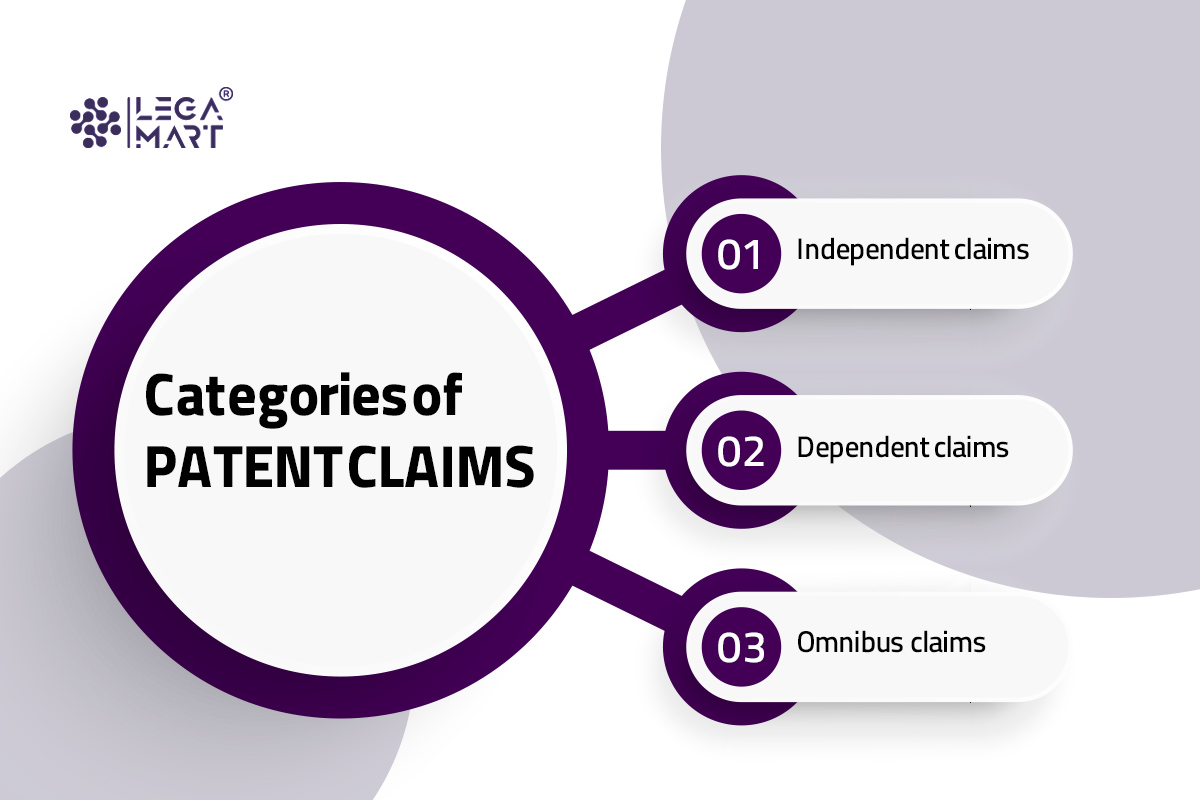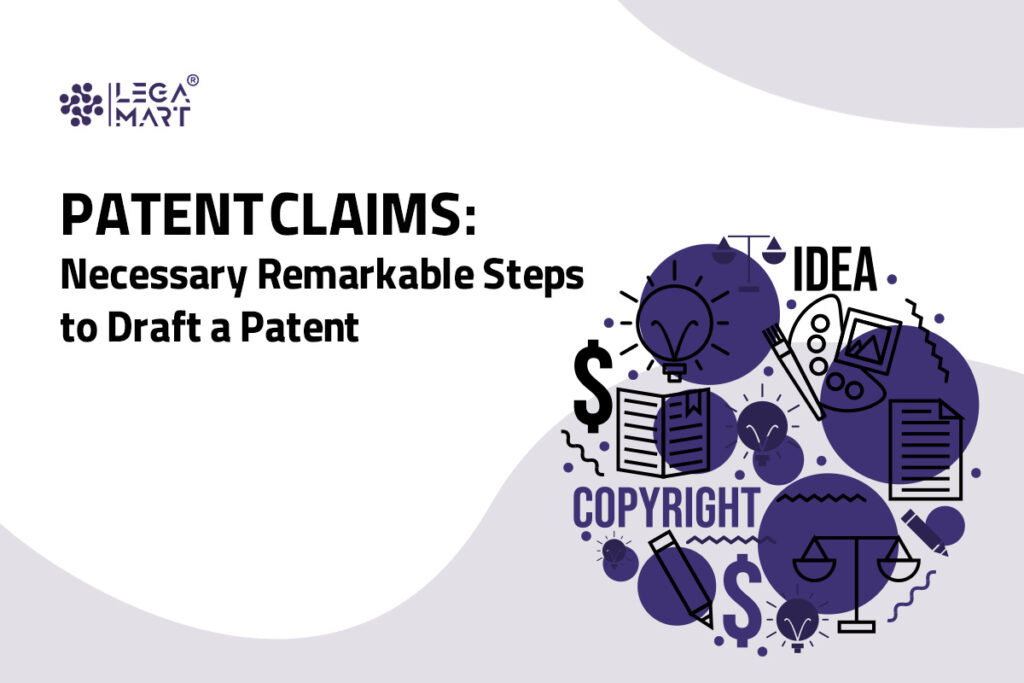Introduction
A patent is a legal document issued by a government authority that grants the holder exclusive rights to an invention for a specific period, usually 20 years from the filing date. This exclusive right means the patent holder has the legal authority to prevent others from making, using, selling or importing the patented invention without their permission. There are patent claims that play a central role within the patent document, such that while a patent document defines an inventor’s exclusive rights, the patent claims are specific terms and conditions that detail what is protected.
What is a patent claim?
A patent claim serves as the backbone of any patent application. While the patent’s description provides instructions on creating and utilising the invention, the claims establish the legal protection’s boundaries.
Here is the critical point: Only the technology explicitly defined in the claims enjoys protection under the patent. If the claim is not meticulously crafted, any innovations detailed in the description but not included in the claim could fall into the public domain when the patent is granted and published. This would permit others to utilise that information without the patent owner’s consent.
Categories of patent claims

Independent claims are also known as ‘unattached’ claims. This means they do not reference or relate to other claims (s). A preamble and all the elements required to establish and describe the invention are included in independent claims.
Ordinarily, the initial claim is an independent claim that establishes a premise for the protection pursued by the invention. To discourage would-be infringers from bypassing the independent claim, independent claims are commonly wider in scope than dependent claims.
Independent claims are typically classified into three types:
- Demand for something
- Claim for a method of producing something
- Claim for a method of doing something
Dependent claims limit their scope by referring to a prior or independent claim. Dependent claims limit the scope of a prior claim. Besides, dependent claims enhance the protection desired for an invention.
Furthermore, dependent claims may include numerous non-essential attributes, relatively insignificant characteristics, and voluntary features not defined in the independent claim.
Omnibus claims describe an invention by referencing portions of the specification, including drawings or examples. These claims are utilised when the invention is already detailed within the specification. However, it’s important to note that some countries, including the United States, South Korea, China, Israel, Australia, and India, do not allow omnibus claims.
Patent claim construction and its significance
In the realm of patent law, the foundation of a patentee’s exclusive rights rests squarely upon the claims specified in the granted patent. When disputes arise concerning the extent of these exclusive rights, the courts must shoulder the burden of interpreting the patent. This process, known as claim construction, entails deciphering the language used in the patent claims to ascertain their intended meaning and scope.
Claim construction plays a pivotal role in patent litigation for several reasons. First and foremost, it determines whether the patent aligns with the essential conditions and prerequisites for patentability. In other words, it decides if the patent genuinely represents a novel, useful, and non-obvious invention, as patent law requires.
Secondly, and equally crucial, claim construction is instrumental in gauging whether the patent has been infringed. By meticulously analysing the scope and interpretation of the claims, the courts can ascertain whether a third party’s actions or inventions infringe upon the exclusive rights granted to the patentee.
In essence, patent claim construction acts as the compass guiding patent litigation, upholding the integrity of the patent system by ensuring that patent rights are neither unjustly broadened nor unfairly diminished. It is a process that demands precision and diligence to safeguard the interests of inventors and maintain the delicate balance between innovation and competition.
Considerations when writing your claims
There are three criteria that must be followed when writing your claims: they must be transparent, complete, and fully endorsed. Every claim must be in one sentence, regardless of how long or short.
It is always best to make one’s claim transparent to make it easier to understand for the viewer. When you use words like “thin,” “strong,” “a major part,” or “such as,” it is assumed that you are not clear. These words cause the reader to make a subjective evaluation instead of an objective observation.
All claims must be detailed to cover the innovative characteristics and enough details to contextualise the inventions.
The claims must always be justified by providing explanations. It means that all of the features of your innovations that make up your claim should be fully described. If any terms are being used in claims, those should be identified in the explanation or eliminated from the description of claims.
Narrow and broad claims
According to most patent claims, a significant distinction exists between those that are broad and those that are narrow in scope. Patent professionals often aim for the broadest possible claims to encompass all facets of the invention, including its equivalents and potential future variations. However, the patent examination process introduces a counterbalance as patent examiners within intellectual property offices scrutinise and seek to restrict overly broad claims, allowing only what the inventor genuinely created.
The allure of broad claims lies in their ability to encompass a wide range of products or scenarios, making them appealing to business applicants. Yet, this expansive coverage comes with complexities. Broad claims can be more susceptible to refusal based on a broader spectrum of prior art, potentially making securing and enforcing such patents challenging.
In contrast, narrow claims are highly specific, often detailing numerous elements or limitations of a particular invention within a product. Patents with narrow claims are comparatively easier to obtain and defend. However, they may fall short as effective business tools, as competitors can enter the market with slight modifications to the patented product or service, circumventing the narrow claims.
From a business standpoint, the most strategically sound patent applications tend to encompass various claims, combining broad and narrow elements. This comprehensive approach strikes a balance, providing the broad coverage needed for protection while maintaining the specificity required for effective enforcement.
What if the patent examiners within the intellectual property office reject broader claims but accept narrower claims?
It is a common scenario in most instances that you may receive an indication that certain claims, typically narrower ones like dependent claims, are allowed or considered allowable. However, the broader claims, usually independent claims, mostly face rejection.
In such situations, it is highly recommended that you accept the allowable subject matter promptly and remove the broader claims from consideration. The rationale behind eliminating the rejected claims is to expedite the grant of your initial patent. Simultaneously, you can file a continuing application to pursue those broader claims further. It is, therefore, essential to file the continuing application before the parent application receives its grant.
However, there may be instances where the allowed or allowable narrower claims are so restrictive that they offer minimal value. In such cases, you might choose to contest for the broader claims instead of opting for a continuation application. The decision ultimately depends on the strategic importance and potential of the broader claims compared to the allowable narrower ones.
Patent claim charts
A patent claim chart can be in tabular or graphical format and is often used in patent infringement lawsuits in the United States. A claim chart visually represents all the data analysed in a patent claim. A claim chart is used to determine whether or not there has been any infringement.
Are you a lawyer experienced in drafting patent claims? Your expertise will be invaluable. Join Legamart team of lawyers to become a part of the international community of legal experts.
Example of patent claims
A real-life example of a Tesla Motors claim
“A thermal management system for battery packs, comprising: a manifold; a plurality of temperature monitoring devices attached to a plurality of cells of the battery packs; a battery monitor board connected to said temperature monitoring devices; a plurality of cooling tubes connected to said manifold; a tube seal plug arranged over an end of said cooling tube; and an end fitting arranged on said end of said cooling tube.”
Sewing Process
A method for connecting two pieces of fabric along their edges that includes the following steps:
(a) producing said two pieces of fabric and attaching them so that one piece’s edge portion overlaps an adjacent piece’s edge portion,
and
(b) passing a thread in sequentially different directions through and along the length of the overlapping fabric and through consecutively spaced pores in said overlapped adjacent portions.
Along said edge parts, said two pieces of cloth will be joined.
Pharmaceuticals
Preparing a wet granulation in which a compound of formula ##ABC10##, wherein X is a number ranging from about zero to five, and the individual optical isomers thereof, a diluent, and an inert gas are mixed with a solution of a binding agent; screening the wet granulation, drying the wet granulation, and screening the dry granulation.
Baking
A method of making a circular chiffon cake, comprising: preparing a dough comprising starch, fat, and sugar, wherein said batter has a moisture content before baking from about 12% to about 19% by weight of the cake.
Conclusion
In conclusion, a patent is a valuable legal tool that grants exclusive rights to inventors for a specified period in exchange for disclosing their innovations. Central to the patent document are the claims, which delineate the scope of these rights and provide a protective barrier against patent infringement. These claims fall into two categories: independent claims that stand alone and set the foundation for protection and dependent claims that refine and expand upon the original. Crafting patent claims with clarity, completeness, and precision is imperative so anyone can understand and interpret them. By adhering to these principles, inventors can secure their intellectual property and safeguard their innovations in the world of patents.
Frequently asked questions
What is the doctrine of equivalents in patent law?
The doctrine of equivalents is a legal concept that allows a patent holder to claim infringement even when every element of their patented invention isn’t identical in an allegedly infringing product. Its purpose is to prevent infringers from copying a patented invention by making minor changes while maintaining the same functionality. The critical question is whether the accused product/process contains elements identical or equivalent to each claimed element of the patented invention.
I renumbered claims during the international stage of my international patent application. Can I amend these claims during the national stage?
Yes, you can amend renumbered claims during the national stage. The status identifier “original” is used for renumbered claims that haven’t been amended. “Previously presented” is used for renumbered claims that were previously amended but won’t be amended further in the current amendment. “Currently amended” is used for renumbered claims being amended in the current process.




